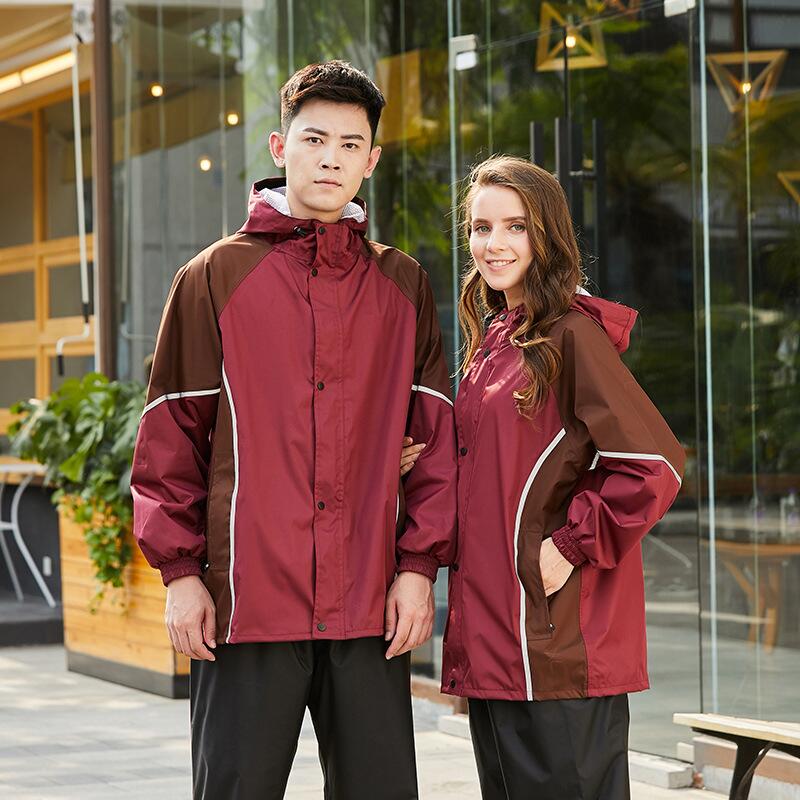 rainwears@163.com may@may-rain.com
rainwears@163.com may@may-rain.com Mon to Friday: 8.00 am - 7.00 pm
Mon to Friday: 8.00 am - 7.00 pm
Sustainable Innovations in Waterproof Apparel Using Eco-Friendly Materials
The Rise of Plastic Rainwear A Sustainable Solution for Wet Weather
As environmental concerns continue to dominate conversations around fashion and consumer goods, the rise of plastic rainwear has emerged as a fascinating development in the industry. Lightweight, practical, and increasingly stylish, plastic rainwear offers a sustainable alternative to traditional rain gear while addressing issues of waste and environmental impact.
The Evolution of Rainwear
Historically, rainwear has been made from a variety of materials, ranging from rubber to oilcloth to modern synthetic fabrics. While these materials have served their purpose, they often come with significant environmental costs. The production of conventional rainwear typically involves the use of fossil fuels, substantial water consumption, and harmful chemicals that can pollute local ecosystems.
Recently, however, innovators in the fashion industry have turned to plastic waste as a resource for creating rainwear. By repurposing materials like recycled plastic bottles, brands can create durable and waterproof fabrics that not only protect against the elements but also reduce the environmental impact of their production processes. This shift has been motivated by the urgent need to address the global plastic crisis, where millions of tons of plastic waste end up in oceans, landfills, and other ecosystems every year.
The Benefits of Plastic Rainwear
One of the primary advantages of plastic rainwear is its lightweight nature. Made from various types of recycled plastics, these garments are designed to be both functional and easy to carry. They provide excellent protection from rain and wind without the bulk associated with traditional rain jackets. For those who commute or engage in outdoor activities, this has proven to be an invaluable feature.
Moreover, plastic rainwear is becoming increasingly fashionable. Designers are experimenting with colors, patterns, and cuts that appeal to a wide range of consumers. People are no longer willing to compromise on style for functionality; thus, the industry is evolving to produce fashionable yet practical raincoats and jackets. Collaborations between high-profile designers and sustainable brands have emerged, leading to unique pieces that cater to eco-conscious consumers without sacrificing aesthetics.
plastic rainwear

Environmental Impact and Sustainability
The production of plastic rainwear embodies the principles of the circular economy. Instead of discarding plastic waste, brands are finding innovative ways to recycle and reuse materials, thus reducing the demand for virgin plastics. This not only helps to reduce the overflow of plastic waste but also minimizes the reliance on oil-based materials, which are harmful to the environment.
In addition to their eco-friendly production methods, many brands producing plastic rainwear adopt ethical labor practices and transparency in their supply chains. This commitment to sustainability extends beyond the materials used, reinforcing a holistic approach to ethical fashion.
Challenges and Future Prospects
Despite the positive aspects of plastic rainwear, challenges remain. The durability of recycled plastic fabric, while improving, can still fall short compared to traditional materials under certain conditions. Additionally, the environmental impact of microplastics has raised concerns; as these garments are washed, tiny fibers can shed into waterways, contributing to pollution.
To address these issues, ongoing research and innovation are critical. Partnerships between brands, scientists, and environmental organizations can lead to improvements in fabric technology and waste management practices. Furthermore, consumer education will play a vital role in encouraging responsible washing habits to minimize microplastic release.
Conclusion
The emergence of plastic rainwear is a promising step toward a more sustainable future in fashion. By embracing the challenge of repurposing materials and reducing waste, the industry is paving the way for eco-friendly alternatives that do not compromise style or functionality. As consumers increasingly demand sustainable options, plastic rainwear stands out as an innovative solution that aligns with the growing movement for conscious consumerism. As we look ahead, the potential for plastic rainwear to make a significant impact in the fashion industry is brighter than ever.
-
Children's Fashion Waterproof Printed Raincoats | Kids Gear
NewsJul.31,2025
-
Silver Printed Women’s Jacket – Stylish, Lightweight & Trendy Outerwear
NewsJul.30,2025
-
Fashionable Design Long Raincoat Rain Poncho Waterproof Polyester
NewsJul.30,2025
-
High Lighting Reflective Rain Jacket Windbreaker Safety Jacket for Adult
NewsJul.29,2025
-
Disposable PE Rain Poncho - Lightweight, Waterproof, Easy to Carry
NewsJul.29,2025
-
Stylish Lady Coat Women Jacket – Trendy & Elegant Outerwear
NewsJul.29,2025































